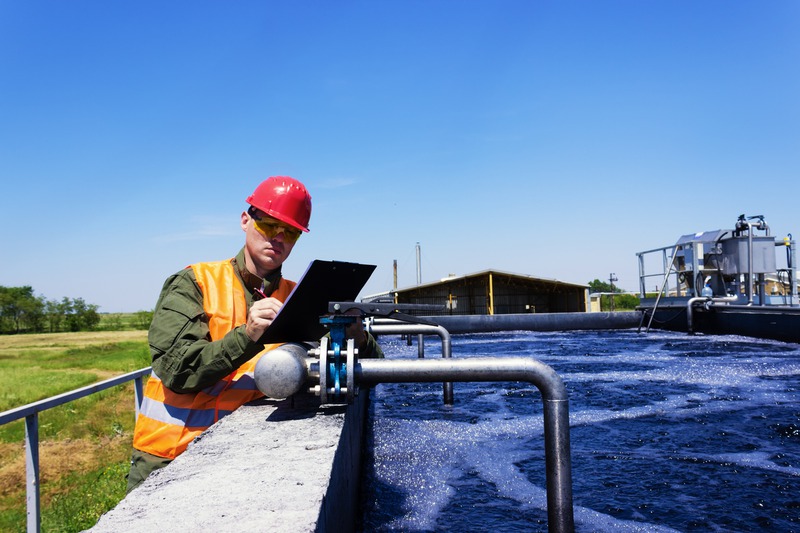Water treatment is a cornerstone of public health, ensuring communities have access to safe drinking water. However, with this essential service comes a responsibility to acknowledge and manage its environmental effects. From the use of chemicals in the process to the energy consumed by treatment plants, the impact on our natural world varies. This article explores these effects and offers insights into how improvements can be made to meet both human and environmental needs.
How Water Treatment Impacts the Environment
Understanding the environmental consequences of water treatment is key to developing sustainable practices. These processes have multifaceted impacts, and addressing these can lead to significant environmental benefits.
-
Chemical Residues: Chemicals like chlorine used in water treatment can lead to residues that enter natural waterways, affecting aquatic life negatively.
-
Energy Requirements: Large-scale treatment facilities demand considerable energy, contributing to greenhouse gas emissions that harm our planet.
-
By-products and Waste: The process generates sludge and other waste materials that, if improperly managed, can contaminate land and water sources.
-
Resource Use: Building and maintaining these plants consume natural resources, disturbing local ecosystems where materials are sourced.
Balancing Water Quality and Environmental Impact
The balance between achieving high water quality standards and minimizing environmental impacts is both delicate and essential. Communities and organizations strive to ensure that water remains clean and safe for all while protecting the natural environment. The challenges involved in this endeavor are significant, but there are effective strategies to help bridge the gap.
Innovations in Water Treatment
Innovations play a vital role in enhancing water quality while being mindful of environmental impact. One notable approach is the adoption of energy-saving technologies in water treatment plants. These technologies can significantly reduce energy consumption, resulting in less strain on natural resources and power grids.
Optimizing Chemical Use
-
Another important strategy is optimizing the use of chemicals in water treatment processes.
-
This approach helps limit the potential for pollution, ensuring that chemicals do not harm the surrounding ecosystem.
Using fewer and less harmful chemicals can lead to healthier water sources and habitats for wildlife. It benefits not only human health but also the biodiversity of the area.
Proper Management of By-Products
Proper management of by-products from water treatment is another critical aspect of maintaining this balance. By actively recycling or ensuring safe disposal of any waste generated, treatment facilities can contribute to environmental health. Safe practices help prevent contaminants from entering local ecosystems, which is vital for maintaining water quality over time.
Advantages of Water Treatment
Despite its environmental challenges, water treatment is pivotal for modern society, offering numerous benefits that extend beyond clean water supply.
-
Elimination of Waterborne Diseases: Efficient treatment processes remove pathogens, ensuring health and safety.
-
Support of Ecological Health: Properly treated water returned to the environment upholds the integrity of ecosystems.
-
Facilitation of Water Recycling: Technologies enable the reuse of treated wastewater, aiding conservation efforts.
Steps Towards Environmentally Friendly Water Treatment
Efforts towards sustainable water treatment involve multifaceted approaches that consider energy, chemical use, and waste management. Below are some actionable steps:
-
Implement Renewable Energy: Use green energy sources like solar or wind in treatment plants to cut down on carbon emissions.
-
Minimize Chemical Use: Explore alternatives to traditional chemicals while optimizing their application to reduce potential harm.
-
Embrace Water Recycling: Encourage the reuse of treated wastewater in agriculture and industrial applications.
-
Manage Waste Responsibly: Focus on recycling and proper disposal to prevent environmental contamination.
-
Foster Innovation: Support research into technologies that enhance both efficiency and eco-friendliness.
Challenges and Opportunities in Green Practices
Transitioning to greener water treatment practices presents challenges, primarily due to cost and infrastructure needs. Yet, the investment promises long-term environmental and economic benefits.
Successful adoption of these practices relies on collaboration and investment in new technologies. Partnering with a water treatment company in Bedford or similar innovative service providers can streamline shifts to environmentally friendly methods. Expertise from such companies supports effective process integration while minimizing operational disruptions.
Seamless Ecosystem Integration
Ensuring water treatment processes integrate smoothly with the ecosystem requires careful planning and execution. This includes leveraging technology to reduce waste and enhance resource efficiency.
Exploring water quality solutions can offer insights into minimizing negative impacts. These efforts not only maintain high water quality but also promote healthier ecosystems conducive to native flora and fauna.
Policy and Innovation in Environmental Sustainability
Sustainability in water treatment hinges on the cooperation of policymakers and innovators. Their efforts set the stage for regulatory frameworks and technological advancements critical to green practices. Effective regulations foster industries to adopt sustainable measures, ensuring compliance without compromising water quality.
Policymakers must collaborate closely with technologists to keep up with emerging solutions that support environmental goals. Regular water system repairs contribute by reducing inefficiencies and resource usage. These measures are vital in maintaining the balance between operational effectiveness and environmental integrity.
Closing Remarks
Water treatment undeniably bears an environmental footprint. However, through conscious efforts in adopting sustainable practices and innovative technologies, significant progress can be made. Balancing clean water provision with environmental stewardship requires collaborative efforts from all stakeholders, individuals, industries, and governments. Exploration and implementation of eco-friendly solutions ensure a future where clean water and a healthy environment coexist harmoniously, enhancing overall quality of life.

